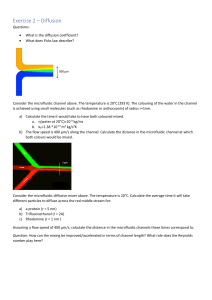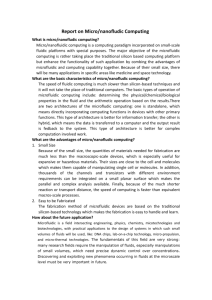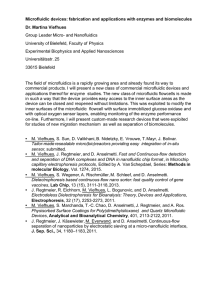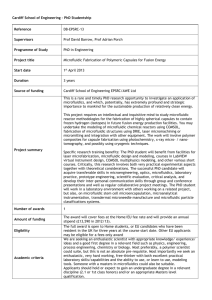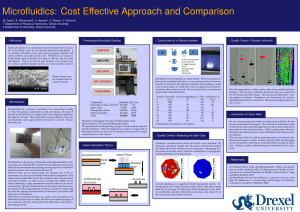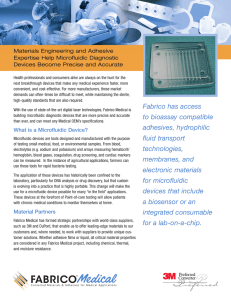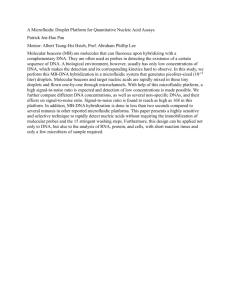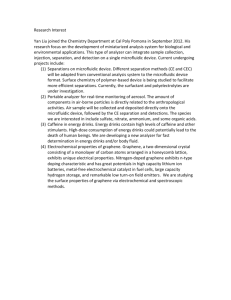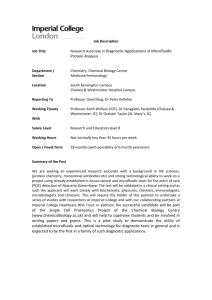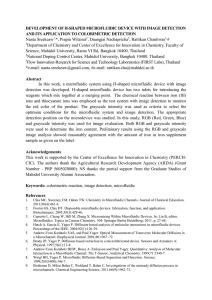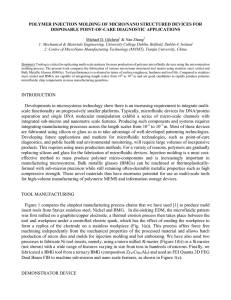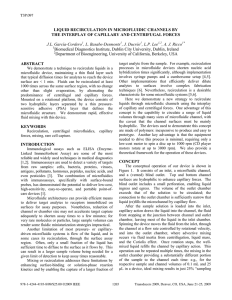The Department of Mechanical Engineering Engineering Mechanics
advertisement
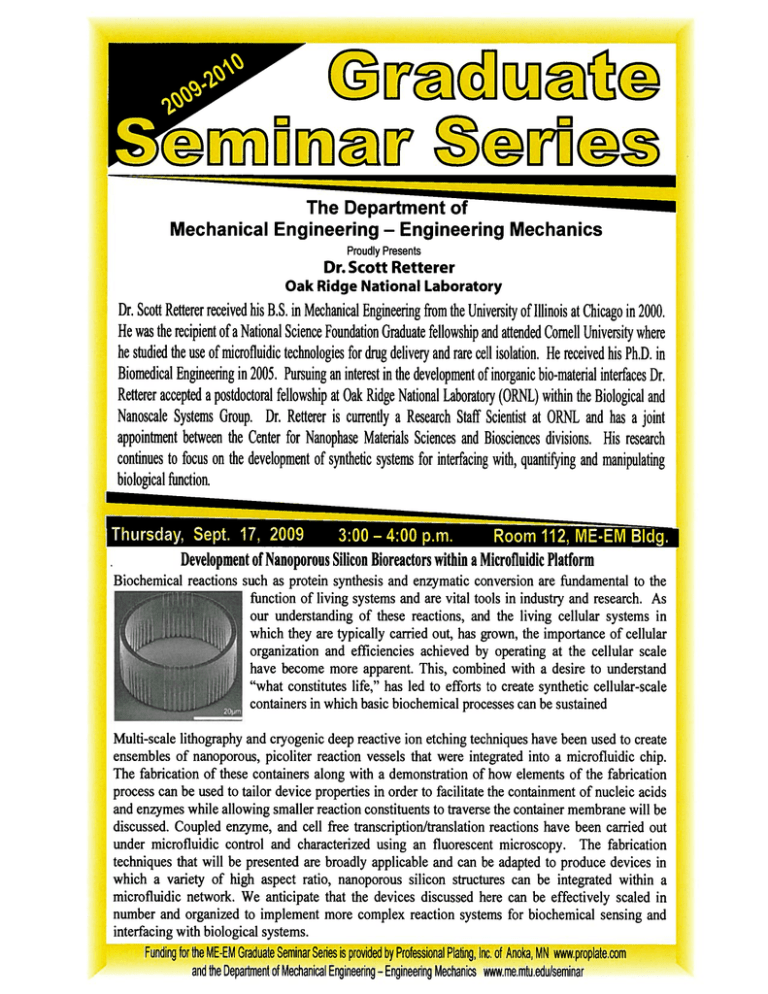
The Department of Mechanical Engineering Engineering Mechanics — Proudly Presents Dr. Scott Retterer Oak Ridge National Laboratory Dr. Scott Retterer received his B.S. in Mechanical Engineering from the University of Illinois at Chicago in 2000. He was the recipient of a National Science Foundation Graduate fellowship and attended Cornell University where he studied the use of microfluidic technologies for drug delivery and rare cell isolation. He received his Ph.D. in Biomedical Engineering in 2005. Pursuing an interest in the development of inorganic bio-material interfaces Dr. Retterer accepted a postdoctoral fellowship at Oak Ridge National Laboratory (ORNL) within the Biological and Nanoscale Systems Group. Dr. Retterer is currently a Research Staff Scientist at ORNL and has a joint appointment between the Center for Nanophase Materials Sciences and Biosciences divisions. His research continues to focus on the development of synthetic systems for interfacing with, quantifying and manipulating biological function. Thursday, Sept. 17, 2009 3:00 4:00 p.m. Room 112, ME-E1VFBkIg. Development of Nanoporous Silicon Bioreactors within a Microfluidic Platform — Biochemical reactions such as protein synthesis and enzymatic conversion are fundamental to the function of living systems and are vital tools in industry and research. As our understanding of these reactions, and the living cellular systems in which they are typically carried out, has grown, the importance of cellular organization and efficiencies achieved by operating at the cellular scale have become more apparent. This, combined with a desire to understand “what constitutes life,” has led to efforts to create synthetic cellular-scale containers in which basic biochemical processes can be sustained Multi-scale lithography and cryogenic deep reactive ion etching techniques have been used to create ensembles of nanoporous, picoliter reaction vessels that were integrated into a microfluidic chip. The fabrication of these containers along with a demonstration of how elements of the fabrication process can be used to tailor device properties in order to facilitate the containment of nucleic acids and enzymes while allowing smaller reaction constituents to traverse the container membrane will be discussed. Coupled enzyme, and cell free transcription/translation reactions have been carried out under microfluidic control and characterized using an fluorescent microscopy. The fabrication techniques that will be presented are broadly applicable and can be adapted to produce devices in which a variety of high aspect ratio, nanoporous silicon structures can be integrated within a microfluidic network. We anticipate that the devices discussed here can be effectively scaled in number and organized to implement more complex reaction systems for biochemical sensing and interfacing with biological systems. Funding for the ME-EM Graduate Seminar Señes is provided by Professional Plating, Inc. of Anoka, MN www.proplate.com and the Department of Mechanical Engineering Engineenng Mechanics www.me.mtu,edulseminar —
